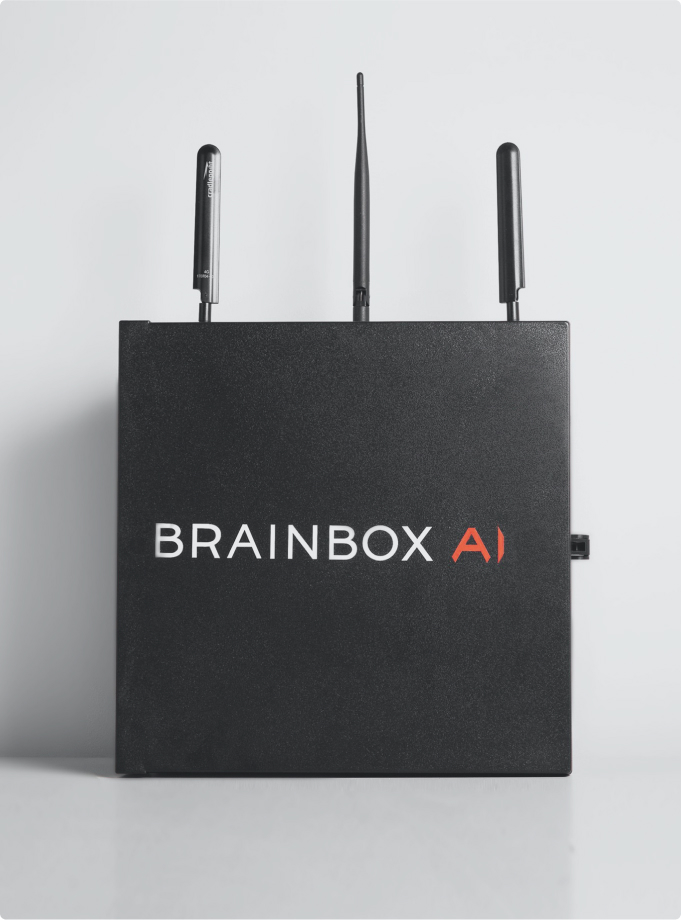Libérer le potentiel de l'efficacité énergétique dans les bâtiments commerciaux
(Disponible pour le moment en anglais seulement)
Commercial buildings are notoriously energy inefficient, particularly when it comes to their heating, ventilation, and air conditioning (HVAC) systems. Yet in this inefficiency lies a wealth of latent savings. Tapping into these savings is key to optimising a building’s efficiency gains, which, with the help of technological advances, has become simpler today than ever before.
In the U.S., HVAC systems account for around 35% of the energy consumed by retail spaces, office blocks, manufacturing facilities, and other commercial and industrial buildings [1]. 30% of this energy is generally wasted [2]. With effective energy efficiency strategies, this waste could be reduced, saving building owners substantial amounts of money.
This is not news. For decades, energy professionals have published reports on the energy inefficiency of the commercial and industrial buildings sector, which has gradually improved over time.
In fact, in the last 10 years, we have seen a notable improvement in energy efficiency due to government policies on emissions, increased environmental consciousness, and investments in clean technology. However, progress has been slower than anticipated mainly as a result of a sluggish uptick in demand and investment.
For example, in its 2009 report, “Unlocking Energy Efficiency in the U.S. Economy[KES1] ”, McKinsey Global Energy and Materials estimated that, if the U.S. were to overcome significant obstacles to energy efficiency demand and invest $520 billion into the industry, it could expect to see savings within the range of $1.2 trillion by 2020, reducing greenhouse gases by up to 1.1 gigatons annually - the equivalent of powering almost every home in the US [3].
Deutsche Bank Climate Advisors proposed an even more optimistic scenario, in which a $279 billion investment could yield a savings of $1 trillion within 10 years [4].
However, a decade after these projections were made, an International Energy Agency (IEA) report reveals that, although energy efficiency has gradually increased over the years, its growth has not been as rapid as hoped [5].
This, according to Johnson Controls, could be due to several persistent factors:
A lack of awareness of energy saving opportunities within commercial buildings
A lack of certainty that promised energy savings will be achieved
Efficiency projects’ inability to meet an organization’s financial payback criteria
The lack of available capital for investment in projects [6]
In part, these barriers are a function of how commercial properties are run. In many organizations, decisions about energy efficiency projects are made by various individuals (i.e., sustainability officers, facilities managers, and CFOs), who often hold contradictory positions on managing and operating their buildings and facilities. This discord can result in delays or poor decision-making about how to best implement crucial energy-saving measures [6].
Another key cause of these market constraints is a lack of understanding within organizations as to their buildings’ energy use. Without accurate information, it is difficult for any organization interested in achieving greater energy efficiency to a. identify initial energy savings opportunities, b. design and implement an efficiency project, and c. verify whether such projects are indeed saving energy [6].
The Conceptual Barrier to Energy Efficiency
In addition to these constraints, there is also a conceptual obstacle that must be overcome to unlock potential energy savings. Most organizations stick to a static operating model of building operations and maintenance, viewing a building as a collection of mechanical equipment or systems that exist in isolation from one another. Therefore, when improving energy efficiency, organizations begin with enhancing their equipment or system processes. For example, they might optimise a boiler to ensure that it is operating under the proper conditions or according to design specifications.
However, seeing a building as static makes it impossible to fully optimise a boiler. This is because there are many dynamic variables that affect it, such as fluctuating energy demands, changing weather conditions, or varying levels of occupancy. The result of such a static approach is a largely untapped pool of energy efficiency resources.
Energy and the River Flow Concept
Organisations looking to achieve significant short- or long-term efficiency gains should start seeing energy efficiency as a dynamic resource within their building, which functions as an ecosystem of interconnected components. In fact, by adopting this holistic, system-wide approach, organisations could effectively manage the flow of energy throughout their buildings and maintain the right balance between occupant comfort and energy consumption.
One way in which to understand this conceptual shift is to use the river flow concept when considering the movement of energy through buildings. In physics, the law of the conservation of energy states that energy in a closed system is neither created nor destroyed but remains constant. When applied to buildings, this means that energy, whether natural or electric, is cyclical; continuously flowing into a building, being transformed into mechanical work or thermal energy, and then flowing out. And, just like the flow of a river, energy is dynamic, changing minute-to-minute in response to various factors. Just as heavy rainfall could cause a river to overflow, an excess of energy could lead to wasted energy, creating hot/cold spots. Similarly, an underflow of energy would result in reduced comfort levels.
In terms of achieving real energy efficiency, the key is figuring out ways in which to continually modulate the flow of energy throughout a building—in much the same way that a dam ensures consistent water levels. In addition to promoting a more holistic view of commercial buildings, the river flow concept also allows organisations to recognize opportunities for energy savings. This is because, when you look at building systems from the perspective of energy flow, you begin to see the losses that occur as energy moves from input to output.
Consequently, if you can properly manage the flow of energy throughout your building, you can achieve a balance between occupant comfort and energy efficiency while reducing energy waste and decreasing your building’s carbon footprint. For instance, if you could predict energy flow requirements over the course of a day, you could curb overflow, thereby conserving energy and maintaining a constant temperature within your building.
Putting it all together
In short, once a building’s energy use or “flow” is understood, one can pinpoint where energy is being wasted and then work toward implementing methods to combat this waste.
In this document, we detail various heating and cooling systems and their potential energy pitfalls. We then illustrate the various ways in which these pitfalls can be combated through building management systems (BMS), emphasising the holistic benefits of artificial intelligence (AI) as a dynamic tool for rendering HVAC systems more energy efficient.
Pairing AI and building management systems to achieve HVAC efficiency gains
In the U.S., HVAC systems account for around 35% of the energy consumed by retail spaces, office blocks, manufacturing facilities, and other commercial and industrial buildings [1]. 30% of this energy is generally wasted [2]. With effective energy efficiency strategies, this waste could be reduced, saving building owners substantial amounts of money.
This is not news. For decades, energy professionals have published reports on the energy inefficiency of the commercial and industrial buildings sector, which has gradually improved over time.
In fact, in the last 10 years, we have seen a notable improvement in energy efficiency due to government policies on emissions, increased environmental consciousness, and investments in clean technology. However, progress has been slower than anticipated mainly as a result of a sluggish uptick in demand and investment.
For example, in its 2009 report, “Unlocking Energy Efficiency in the U.S. Economy[KES1] ”, McKinsey Global Energy and Materials estimated that, if the U.S. were to overcome significant obstacles to energy efficiency demand and invest $520 billion into the industry, it could expect to see savings within the range of $1.2 trillion by 2020, reducing greenhouse gases by up to 1.1 gigatons annually - the equivalent of powering almost every home in the US [3].
Deutsche Bank Climate Advisors proposed an even more optimistic scenario, in which a $279 billion investment could yield a savings of $1 trillion within 10 years [4].
However, a decade after these projections were made, an International Energy Agency (IEA) report reveals that, although energy efficiency has gradually increased over the years, its growth has not been as rapid as hoped [5].
This, according to Johnson Controls, could be due to several persistent factors:
- A lack of awareness of energy saving opportunities within commercial buildings
- A lack of certainty that promised energy savings will be achieved
- Efficiency projects’ inability to meet an organization’s financial payback criteria
- The lack of available capital for investment in projects [6]
In part, these barriers are a function of how commercial properties are run. In many organizations, decisions about energy efficiency projects are made by various individuals (i.e., sustainability officers, facilities managers, and CFOs), who often hold contradictory positions on managing and operating their buildings and facilities. This discord can result in delays or poor decision-making about how to best implement crucial energy-saving measures [6].
Another key cause of these market constraints is a lack of understanding within organizations as to their buildings’ energy use. Without accurate information, it is difficult for any organization interested in achieving greater energy efficiency to a. identify initial energy savings opportunities, b. design and implement an efficiency project, and c. verify whether such projects are indeed saving energy [6].






